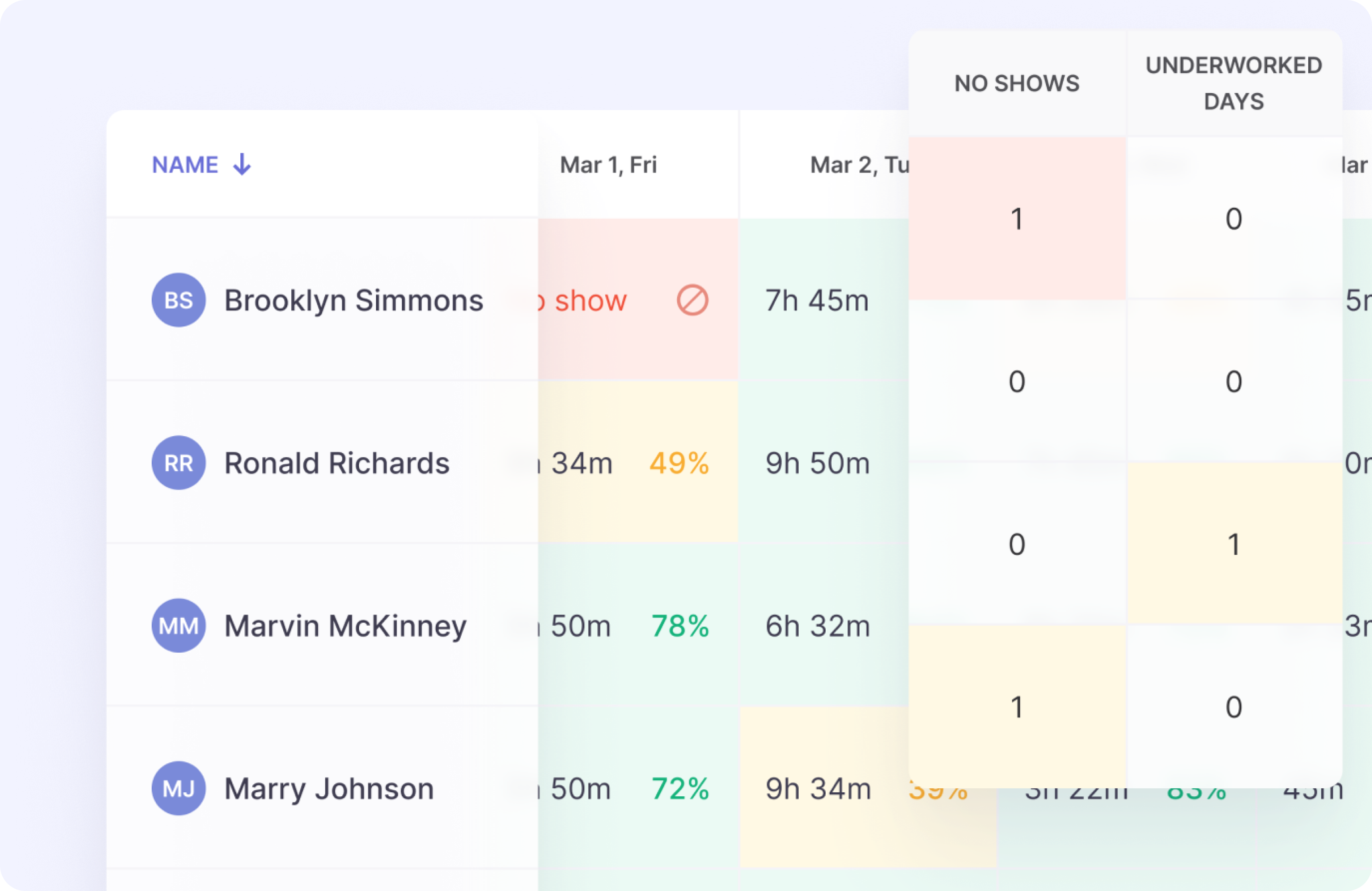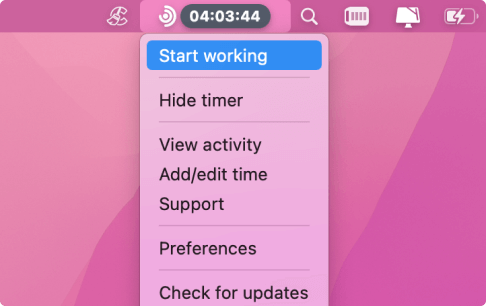Attendance management is a systematic oversight, documenting and regulation of employees’ attendance and work schedules in an organization. This process is implemented for various reasons:
- Compliance with labor regulations
- Computation of remunerations
- Tracking employee productivity
It can also be seen as the policy, measures and systems to manage attendance, making sure that employees work according to set schedules. This is imperative for optimal management of the workforce, paying them on time and adhering to the labor laws. Companies of all sizes, including those with a global workforce, rely on attendance tracking to oversee employees across multiple locations.
There has been an improvement on ways of managing attendance with the rollout of new advanced technologies. Modern systems are especially beneficial for hourly workers and field workers, who often require flexible solutions to track attendance on an hourly basis.
Instead of using paper work and book keeping, there are attendance management software and systems that have been developed that are faster and more precise. Attendance data can now be accessed remotely, allowing both employees and managers to access records from various locations.
Introduction to Attendance Management
Attendance management is the process of systematically tracking and managing employee presence, working hours, breaks, time off, and absenteeism within an organization. As a core component of human resource management, it plays a vital role in ensuring that businesses remain productive, compliant with labor laws, and able to make informed decisions about their workforce.
By implementing an effective attendance management system, employers can accurately track employee attendance, monitor working hours, and generate detailed reports that highlight trends and patterns. Key features of modern attendance management include automated attendance tracking, streamlined leave management, and comprehensive reporting capabilities. With the right attendance management software, organizations can simplify the process, improve compliance, and boost overall productivity.
Importance of Attendance Management
Implementing a robust attendance management system is crucial for organizations aiming to maintain a productive and efficient workforce. By accurately tracking employee work hours and attendance, employers can identify attendance patterns, address issues proactively, and ensure that all staff are meeting their responsibilities.
Effective attendance management reduces the risk of non-compliance with labor laws, helps optimize payroll processes, and supports data-driven decision-making for staffing and scheduling. For businesses, this means minimizing unnecessary costs, improving resource allocation, and fostering a culture of accountability. Ultimately, a well-structured attendance management system not only protects organizations from compliance risks but also drives productivity and supports overall business success.
Types of Bad Attendance
Recognizing attendance issues can enhance the performance of any organization. A few attendance problems include the following:
- Chronic absenteeism: Chronic absenteeism, or repeated absences without good excuse, occurs when an employee has a tendency to miss work a lot without any good excuse. This affects the productivity of the team as some employees are forced to go above and beyond to cover the gaps created.
- Frequent tardiness: Frequent tardiness, or late arrivals, is a nuisance to the team and can serve to derail the project schedule for the entire organization.
- Early departures: Walking out of the office before the scheduled closing time and without prior permission can result to some work remaining unfinished, and therefore, a disturbance to the workflow.
- Unauthorized Breaks: Unreasonable and disproportionate duration of break with no valid reason can lower an individual’s effectiveness and even the entire given team due to its adverse effects.
Knowing these principles allows the HR staff to design measures that would improve the stability and labor productivity of the organization.
It is important to note that these issues, including absences and late arrivals, are also significant when tracking student attendance in educational institutions, where monitoring students’ presence is crucial for academic success.
Consequences of Poor Attendance Management
The absence of an effective system to manage attendance can be detrimental to the running of any business in more ways than one. These include:
- Reduced output: In the absence of accurate records of employee attendance, it becomes difficult to effectively track productivity, manage workloads, and ensure that work schedules are being followed correctly. Poor attendance management can also lead to delays in projects and inefficient use of organizational resources.
- Employee turnover: The number of cases in which employees leave their jobs increases because of disengagement, active recruitment and training are added costs.
- Managerial difficulties: There is laxity in the supervision of members hence the difficult assessment of their performance and the discipline of managers in recognizing the effort put is misplaced.
These problems highlight why it is essential to have a proper attendance monitoring system in place.
Employee Attendance Management Practices
To enhance attendance management of employees, the following HR practices should be instituted:
- Create and communicate policies: Set up attendance policies and explain them to every employee.
- Use automatic systems: Introduce modern attendance management solutions and tracking software with online presence, mobile alerts, and other features to automate tracking attendance and keep precise records. These systems help organizations track attendance for different shifts and manage shift schedules efficiently.
- Encourage a culture of communication: Create an environment where employees are able to report any issues about turning up for work without fear that doing so might backfire. User-friendly systems allow users to easily report attendance issues and help managers monitor their team’s attendance in real time.
- Training needs assessment: Prepare supervisors and human resource practitioners to address treatment of attendance issues in the right way.
- Provide incentives for good attendance: Introduce exemplary attendance awards to motivate those who have the best records.
These ways of attendance management can foster equitable and productive working conditions, which leads to enhanced success of organizations.
Key Features of Attendance Management
A comprehensive attendance management system offers a range of key features designed to simplify and enhance the process of tracking employee attendance. Core features include real-time attendance tracking, which allows employers to monitor employee work hours, breaks, and time off with precision.
Leave management tools enable employees to request and manage their leave balances easily, while automated reporting and analytics provide actionable insights into attendance trends and workforce productivity.
Modern attendance management systems also offer mobile accessibility, seamless integration with payroll systems, and customizable reporting options to meet the specific needs of any organization. User-friendly interfaces, robust security measures, and scalability ensure that these systems can adapt as businesses grow and evolve.
Common Challenges in Attendance Management
Despite the clear benefits, organizations often encounter several challenges when managing attendance. Inaccurate attendance tracking can lead to payroll errors and compliance issues, while practices like buddy punching undermine the integrity of attendance data. Lack of employee engagement and insufficient training can further complicate the process, making it difficult to maintain accurate records.
Integrating attendance management systems with existing payroll and HR systems can also present technical hurdles, and inadequate reporting capabilities may limit the ability to analyze attendance data effectively. To overcome these challenges, organizations should invest in reliable attendance management software, provide ongoing training and support, and foster a culture of accountability and transparency. By addressing these common obstacles, businesses can maximize the effectiveness of their attendance management systems and achieve better productivity and compliance.
How to Use an Attendance Management Software?
What is attendance management software?
Attendance management software is an application designed for tracking records of the working hours and presence of an employee, along with their leaves and sick days, and productivity of the whole staff.
- An attendance tracker automates the process of manually having to clock in and out

- It documents such metrics as employee no show and underworked days (according to the specified by admin time limits)

- Leave and attendance management system allows customizing leave types streamlines employee time off requesting.

To Recap
Attendance management will, in essence, help an organization comply with the various regulations related to labor, compute remunerations accurately, and maintain productivity within the workforce. It will be inclusive of policies, systems, and protocols that will control employee attendance to make it impose a disciplinary and organized behavior in the workplace.
Through technological advancement, businesses are using attendance management software instead of manual mechanisms for tracking employees’ attendance, leaves, and productivity.
Policies addressing absenteeism, tardiness, and unauthorized breaks can only be effectively dealt with when policies are clear, tools automated, and the culture supportive of communicating. With these strategies in place, equal opportunities in terms of working conditions help improve workforce efficiency along with organizational success.


I thoroughly enjoyed your article and found it highly informative. Thanks for sharing
Your blog effectively captures the reader’s attention with its engaging content and well-structured flow. It provides valuable insights while maintaining clarity, making it both informative and enjoyable to read.